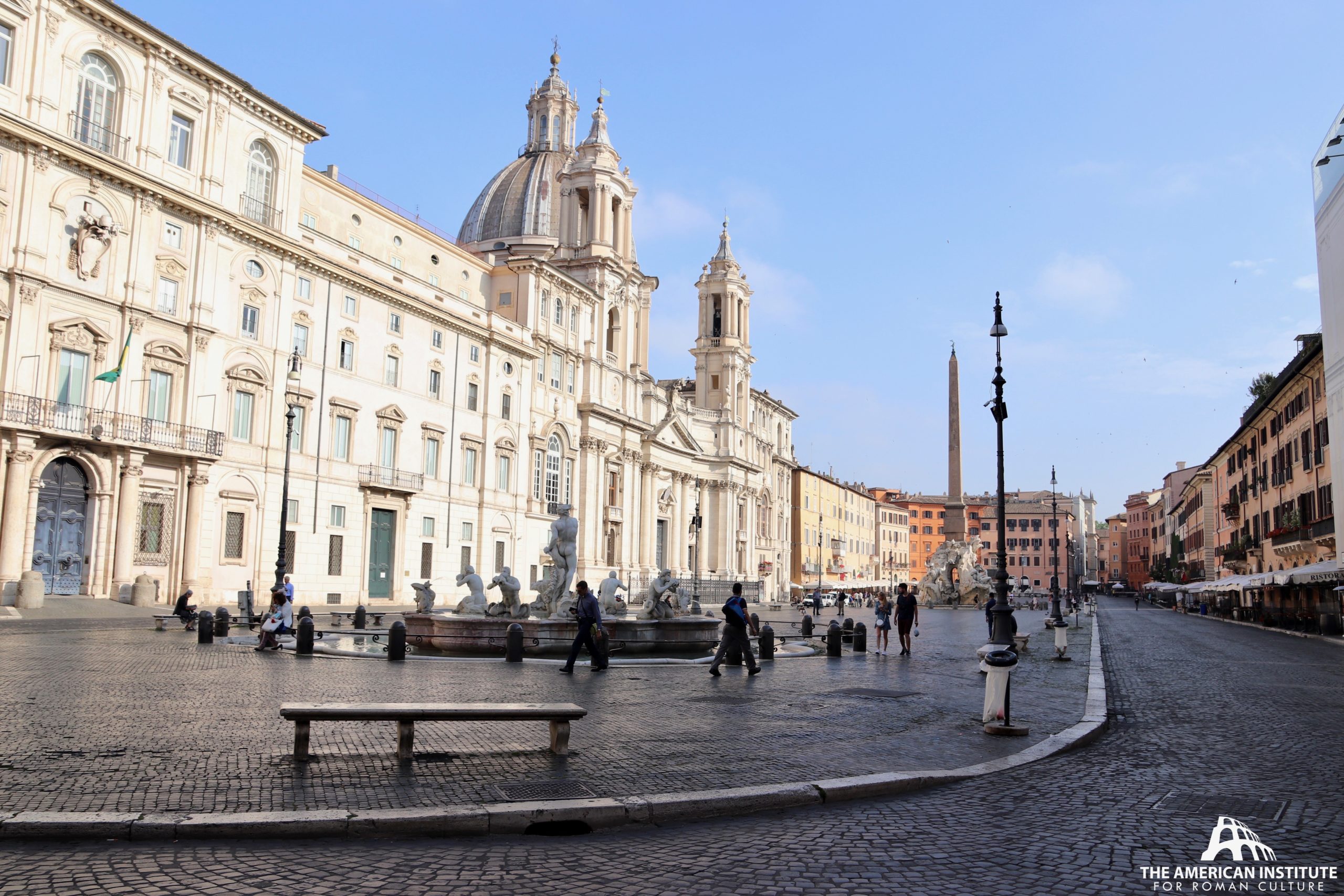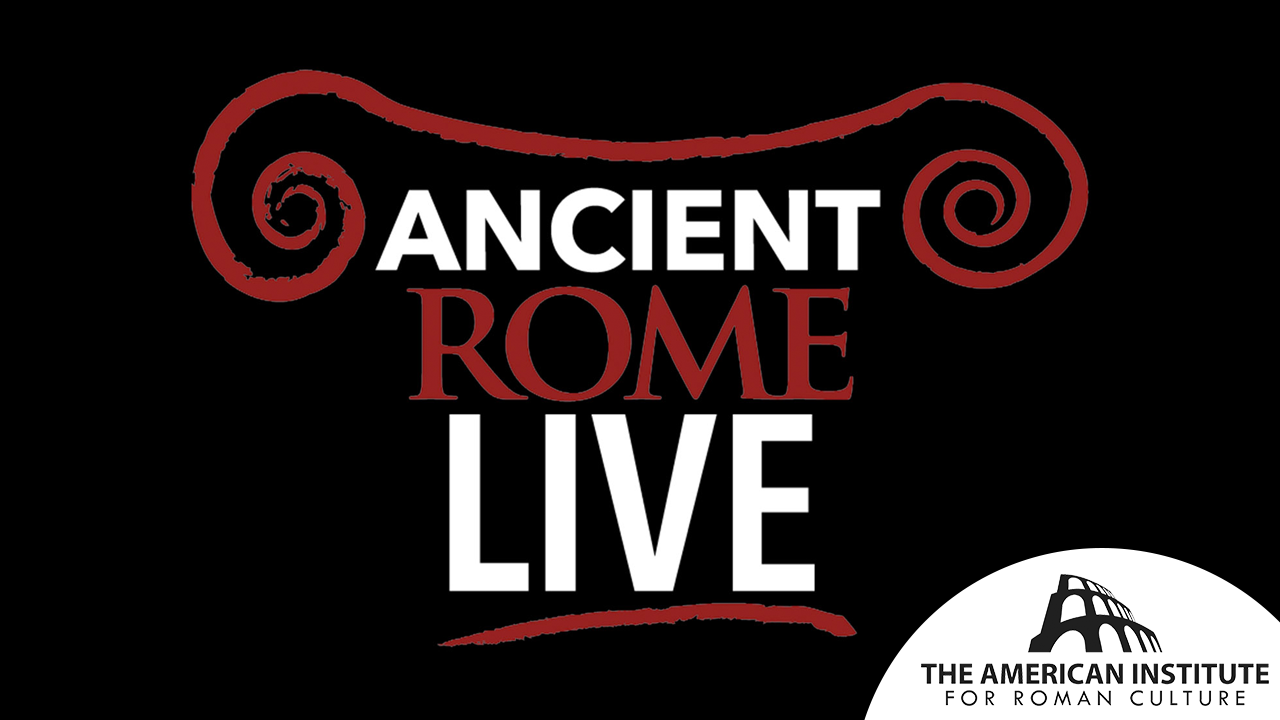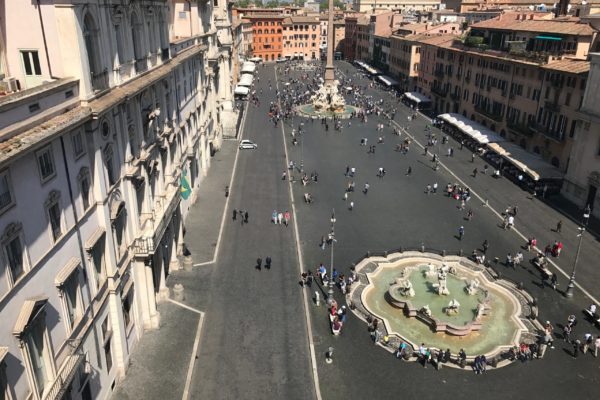Start with our video overview:
Piazza Navona lies in the heart of Rome and directly above millennia of history. The Piazza as it appears today is a baroque masterpiece largely commissioned by Pope Innocent X in the mid-17th century, whose family residence, Palazzo Pamphili, faced the area. Although the constructions in the square date from the baroque period, the unique shape of the piazza is evidence of its ancient foundations. The shape of a Greek running track built on the Campus Martius by Augustus is well-preserved in the square which is curved at the north end and straight at the south end. Domitian rebuilt the wooden structure in stone, creating a stadium that could fit up to 30,000 spectators in its two tiers of seating, above which the buildings now stand. The name Piazza Navona also has its origins in the first use of the square, evolving from the original name ‘Circus Agonalis’ (agones being the games held there) to ‘in navone’ and finally ‘navona.’
The purpose of the Stadium of Domitian was to hold Greek-style games conducted in the nude; the first games to be held in the stadium were in honor of the god Jupiter Capitolinus in 86 CE. As a Flavian design, the Stadium of Domitian resembled the nearby Colosseum in construction and architectural style; on several occasions, when the latter was damaged and out of use, the former acted as a substitute venue.
In the center of Piazza Navona is the Domitian obelisk now crowning Bernini’s Fountain of Four Rivers. Although it shares a name with the stadium buried below, the obelisk was not connected in any way with this area in antiquity. Rather, the obelisk came to the modern square from Via Appia after it was excavated in 1649 by Innocent X. It had been taken to the Circus of Maxentius in the 4th century CE from its original position in the Temple of Isis and Serapis or of Gens Flavia on the Quirinal Hill. Despite its appearance, it was not imported from Egypt but carved by Roman stone cutters with hieroglyphs offering thanks to Domitian and his deified predecessors Vespasian and Titus for restoration works.
Although the Church of Saint Agnes dates only from the 17th century, its origins are ancient and connected to the ground on which it now stands. Saint Agnes was a young Roman aristocrat whose Christian faith prevented her from accepting the advances of her suitors; consequently, she was martyred in the Stadium of Domitian in 304 CE. Considering the relation between the saint and the square, when the Pamphili family commissioned a church in Piazza Navona, a relic of Agnes was transported from the church that had been built above her grave outside the ancient city walls on Via Nomentana. This demonstrates the blend between antiquity and baroque that characterizes Piazza Navona.
Bibliography
- Claridge, “Rome: An Oxford Archaeological Guide”, (Oxford 2010).
- Chaney, “Roman Britannica and the Cultural Memory of Egypt: Lord Arundel and the Obelisk of Domitian”, (Rome 2011).
- Marconi, “The Oxford Handbook of Greek and Roman Art and Architecture”, (Oxford 2018)
Explore further:
This content is brought to you by The American Institute for Roman Culture, a 501(C)3 US Non-Profit Organization.
Please support our mission to aid learning and understanding of ancient Rome through free-to-access content by donating today.
Cite This Page
Cite this page as: Darius Arya, The American Institute for Roman Culture, “Piazza Navona” Ancient Rome Live. Last modified 10/24/2019. https://ancientromelive.org/piazza-navona/
License
Created by The American Institute of Roman Culture, published on 10/24/2019 under the following license: Creative Commons: Attribution-NonCommercial-ShareAlike. This license lets others remix, tweak, and build upon this content non-commercially, as long as they credit the author and license their new creations under the identical terms. Please note that content linked from this page may have different licensing terms.





